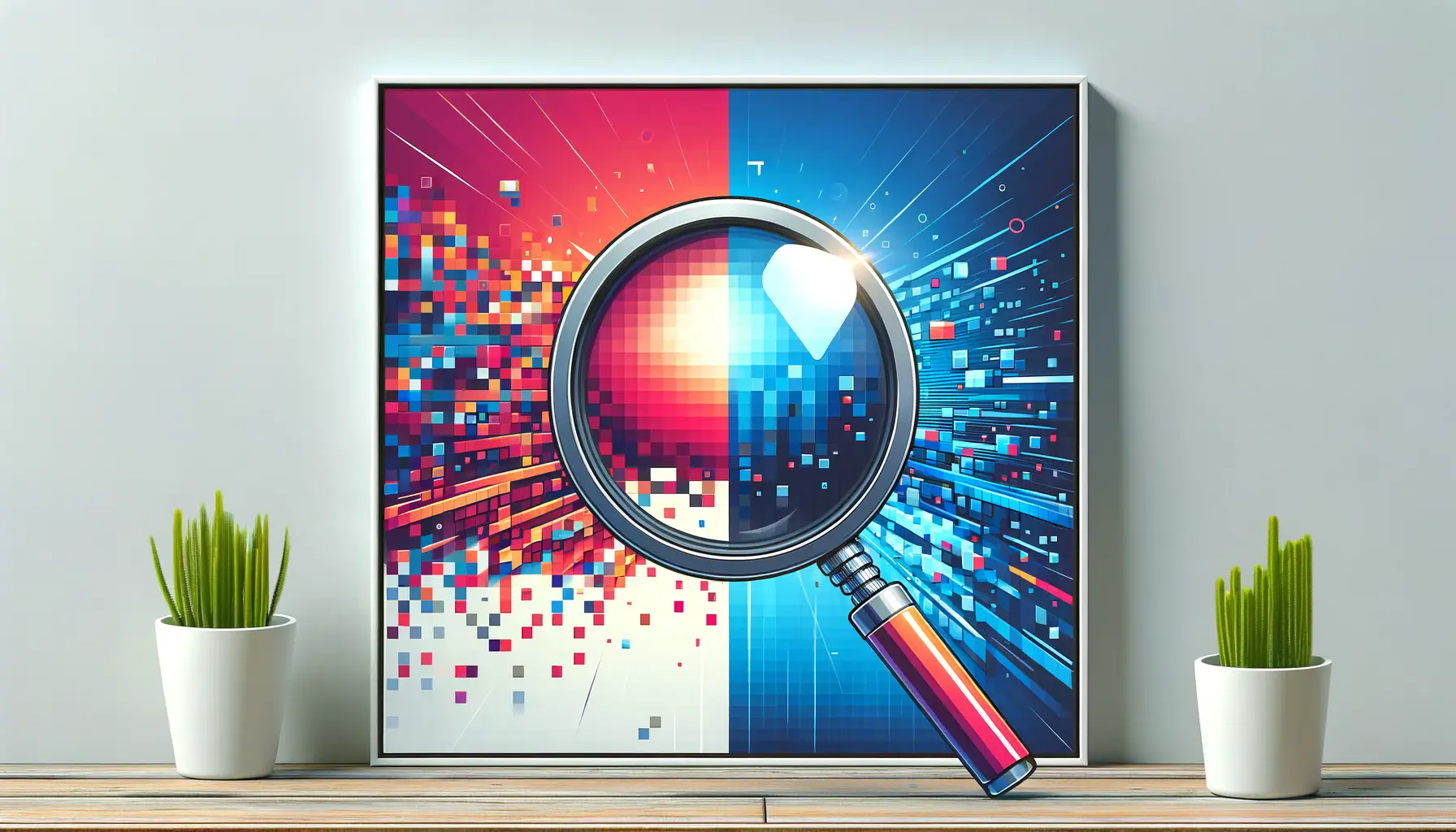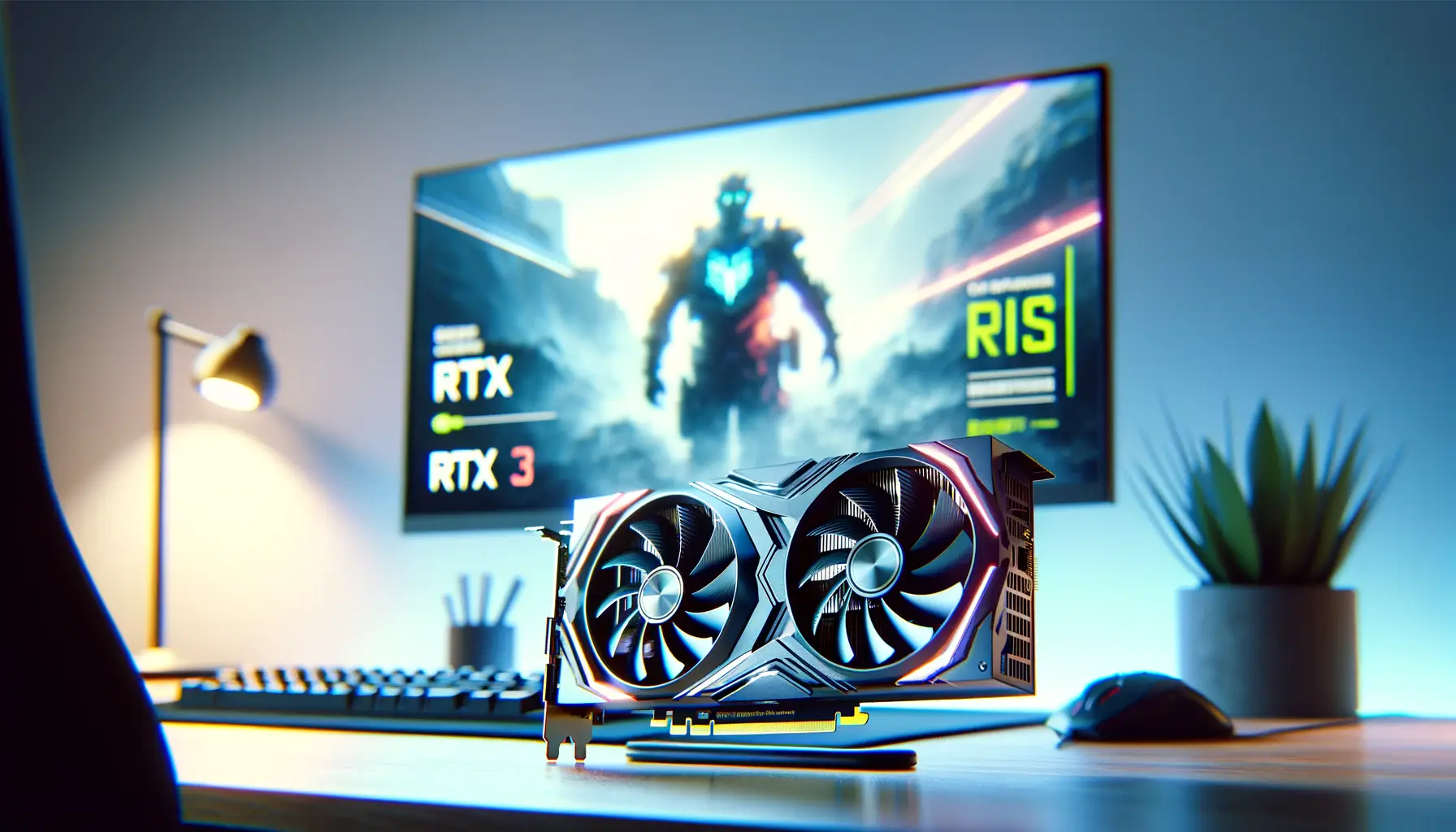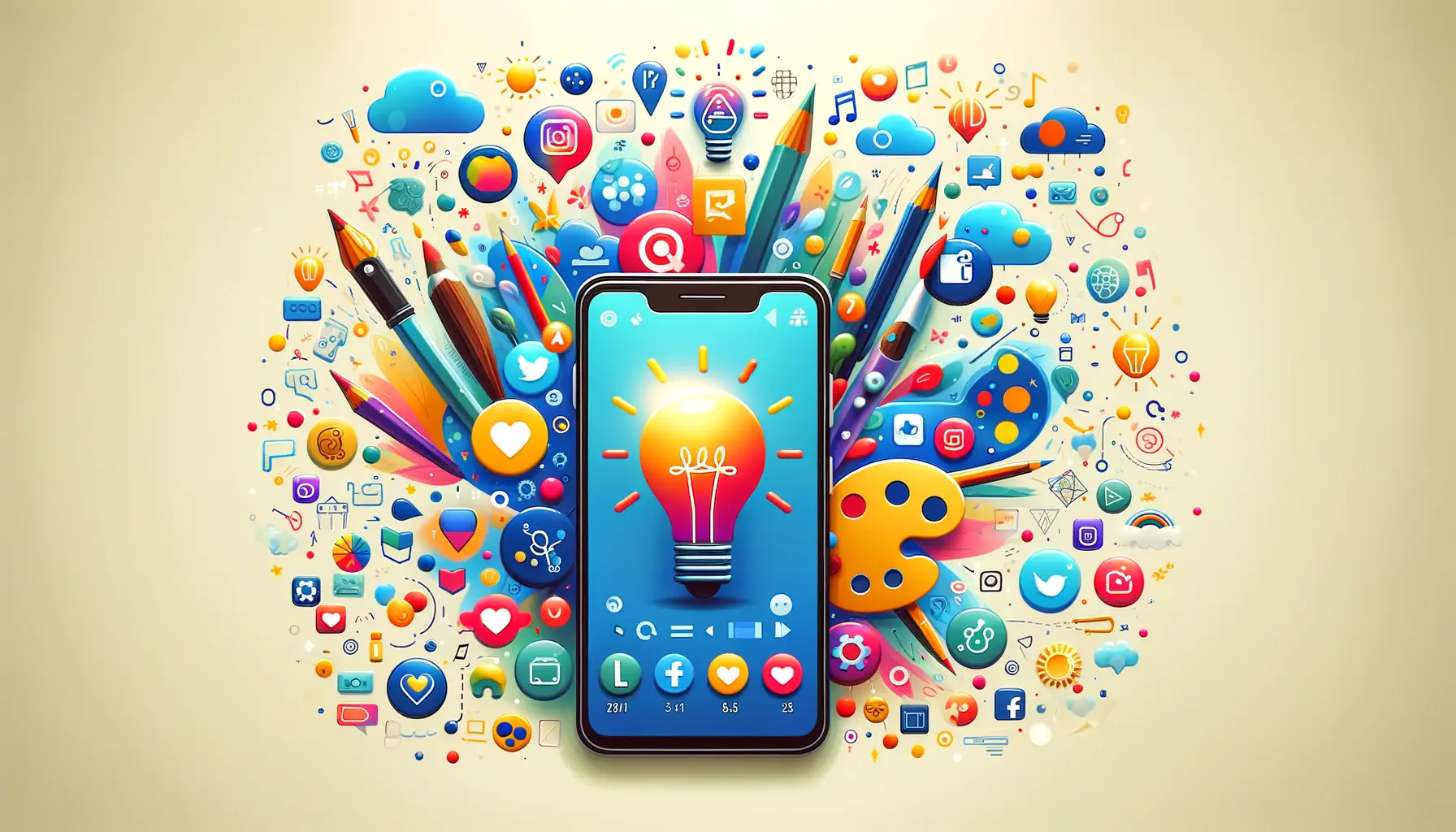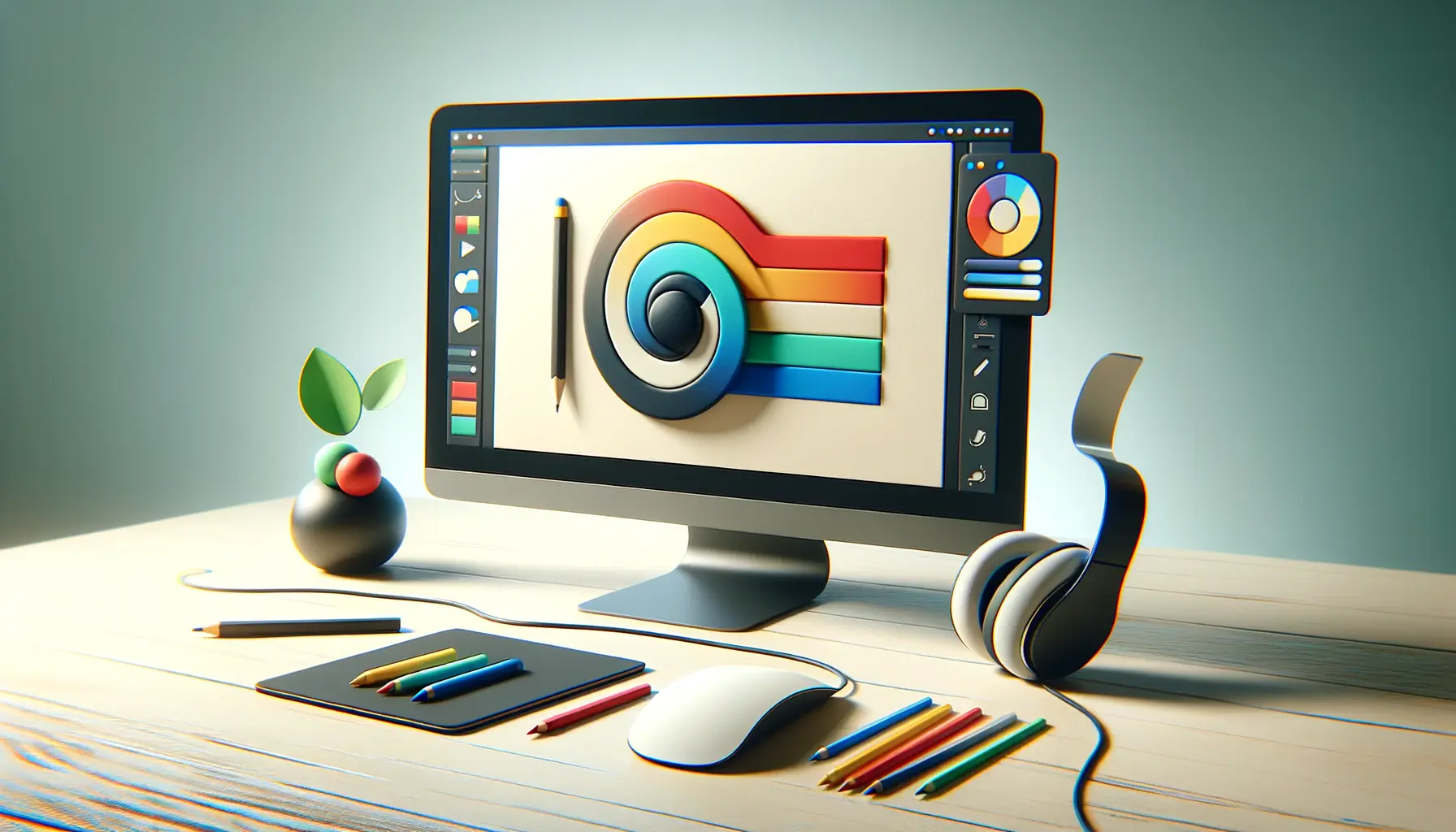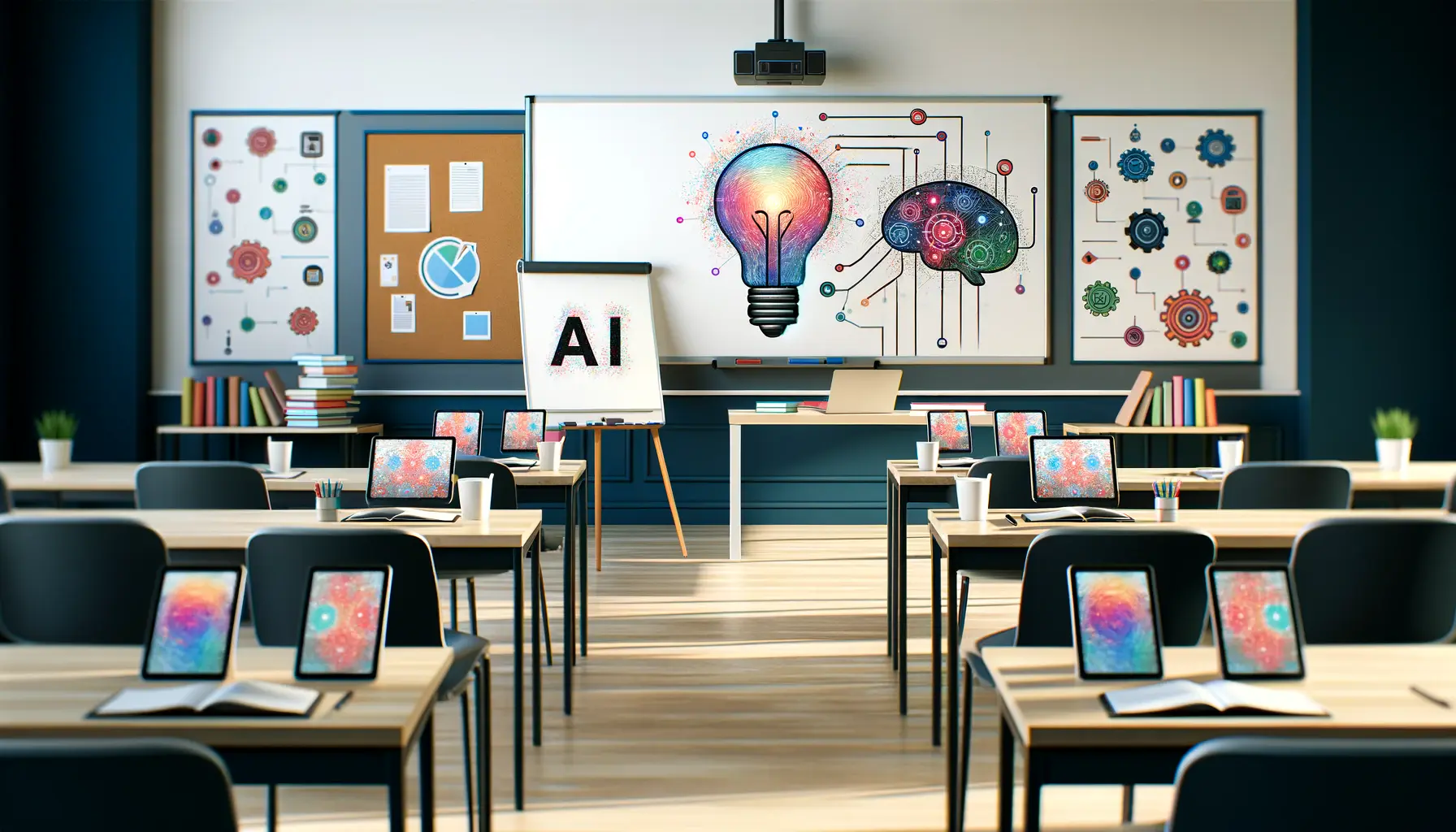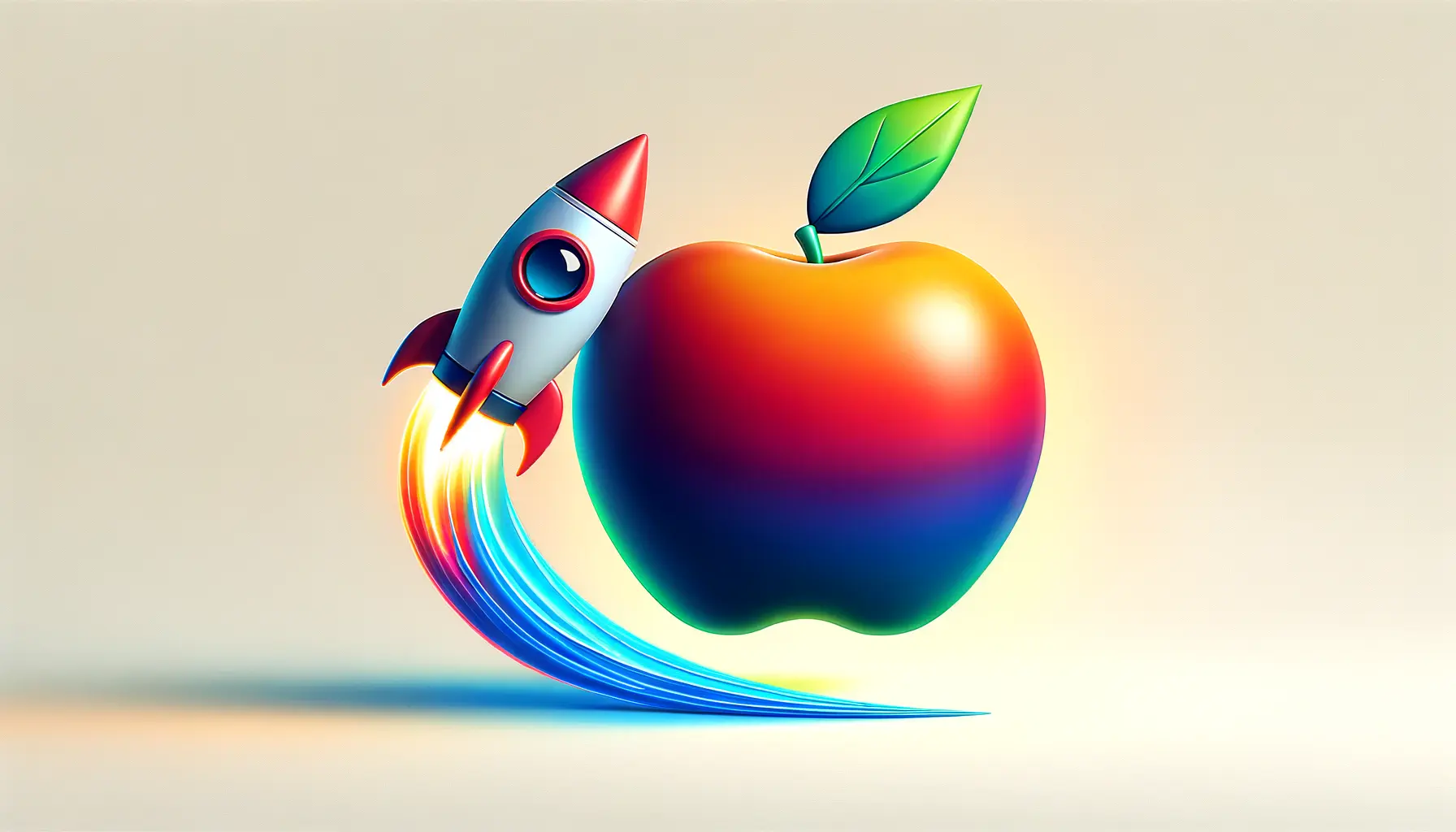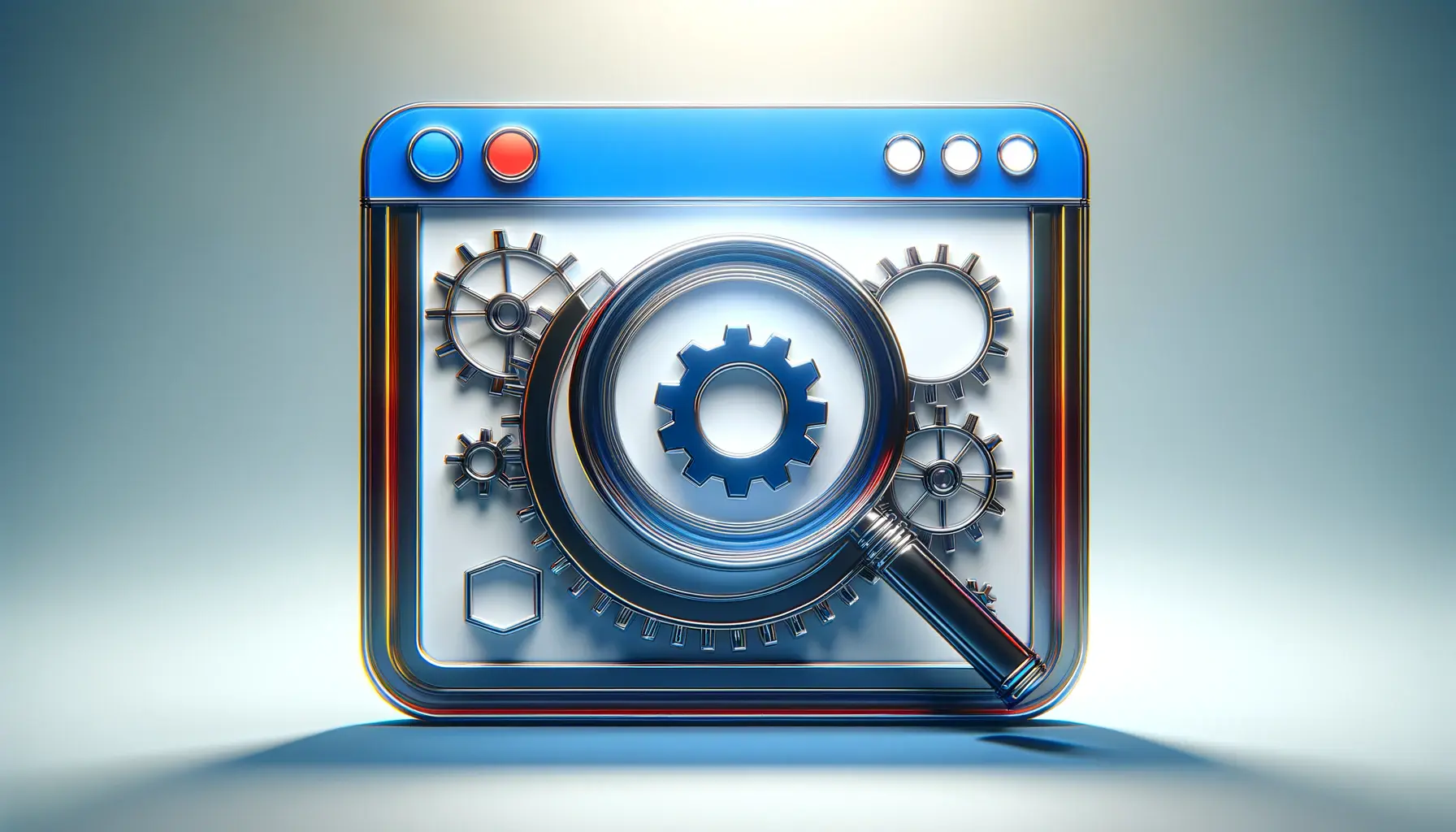The advent of DALL-E, OpenAI’s groundbreaking AI image generator, has revolutionized the way we think about and create digital art.
By interpreting natural language prompts, DALL-E can produce images that are not only unique but also highly detailed, pushing the boundaries of creativity and artificial intelligence.
However, to truly leverage the power of DALL-E, understanding and implementing best practices is crucial.
This ensures the images generated meet the desired quality and creativity standards, making them suitable for a wide range of applications, from digital marketing to fine art.
Enhancing image quality in DALL-E is not just about the technical aspects; it’s also about harnessing creativity in a way that aligns with the tool’s capabilities.
The main keyword, “Best Practices,” serves as a guiding principle for this exploration, ensuring that every piece of advice and strategy is aimed at optimizing the output of DALL-E.
This article, categorized under “ChatGPT’s DALL-E,” aims to provide a comprehensive guide to achieving the best possible results, focusing on the nuances of prompt crafting, image refinement, and creative exploration.
- Understanding DALL-E’s Core Mechanics
- Mastering the Art of Prompt Engineering
- Enhancing Visuals with Post-Processing Techniques
- Exploring Creative Applications of DALL-E
- Navigating Challenges and Ethical Considerations
- Staying Ahead with DALL-E Updates and Community Insights
- Optimizing Workflow with DALL-E Integration
- Embracing the Future with DALL-E
- DALL-E Best Practices FAQs
Understanding DALL-E’s Core Mechanics
The Importance of Precise Prompts
At the heart of DALL-E’s ability to generate high-quality images is the precision of the prompts it receives.
A well-crafted prompt goes beyond a simple description, incorporating specific details, styles, and contexts that guide the AI in generating an image that closely matches the user’s intent.
This precision in prompt crafting is not just about adding more words; it’s about adding the right words that convey clear, concise, and vivid imagery in the mind of the AI.
For instance, instead of using a broad prompt like “a landscape,” specifying “a sunlit Tuscan landscape with rolling hills, a vineyard in the foreground, and a clear blue sky” can dramatically enhance the quality and relevance of the generated image.
This specificity helps DALL-E understand the exact elements and atmosphere you’re envisioning, leading to outputs that are more detailed and aligned with your expectations.
Optimizing Image Resolution and Quality
While DALL-E excels at generating images based on textual prompts, the default resolution may not always meet the requirements for certain applications.
Fortunately, there are strategies to enhance the resolution and overall quality of these images.
Upscaling techniques, for example, can be employed post-generation to increase the image size without significant loss of detail.
Tools like AI-based image enhancers can interpolate additional pixels, making the images suitable for high-resolution displays or print media.
Moreover, understanding the limitations of DALL-E’s resolution can guide the creative process.
For artworks or designs where detail is crucial, focusing on compositions that DALL-E can render effectively at its native resolution can yield better results.
Alternatively, generating images in segments and stitching them together can be a creative workaround for producing large-scale artworks.
The key to maximizing DALL-E’s potential lies in the synergy between precise prompt crafting and post-generation image optimization techniques.
Mastering the Art of Prompt Engineering
Delving deeper into the realm of DALL-E, the mastery of prompt engineering emerges as a pivotal skill for enhancing image quality.
This nuanced art form requires a blend of creativity, specificity, and strategic thinking.
By refining the way we communicate with DALL-E, we can unlock a new level of precision and beauty in the images it generates.
Strategies for Effective Prompt Crafting
Effective prompt crafting is akin to speaking a language that DALL-E understands fluently.
It involves a careful choice of words, an understanding of the AI’s interpretation mechanisms, and a bit of experimentation.
Here are some strategies to consider:
- Be Specific: Detail the elements you want in your image, including objects, setting, lighting, and mood. The more specific you are, the closer the result will match your vision.
- Use Descriptive Language: Adjectives and adverbs can play a significant role in refining the output. Describing a “gloomy, rain-soaked alley” creates a different image than a “bright, sunny street.”
- Incorporate Artistic Styles: Mentioning specific artistic styles or influences can guide DALL-E towards a particular aesthetic. For example, “in the style of Van Gogh” can imbue your image with a post-impressionistic flair.
Understanding DALL-E’s Interpretation of Prompts
The way DALL-E interprets prompts is influenced by its training data and algorithms.
Recognizing patterns in successful prompts can help in crafting more effective ones.
For instance, DALL-E tends to respond well to prompts that balance clarity with creativity, allowing for imaginative outputs that still adhere to the user’s specifications.
- Balance Clarity and Creativity: While being specific, allow room for DALL-E’s creativity to shine through. This can lead to surprising and delightful results.
- Experiment with Variations: Try different phrasings or details in your prompts to see how slight changes can affect the outcome. This experimentation can reveal insights into how DALL-E processes and interprets input.
Prompt engineering is both an art and a science, requiring a blend of clear communication, creativity, and understanding of DALL-E’s capabilities.
Enhancing Visuals with Post-Processing Techniques
Once DALL-E has generated an image, the creative process doesn’t stop there.
Post-processing techniques play a crucial role in enhancing the visual quality and applicability of the generated artwork.
These techniques range from simple adjustments to more complex edits, all aimed at refining the image to meet specific aesthetic or functional requirements.
Understanding the tools and methods available for post-processing is essential for anyone looking to maximize the impact of their DALL-E creations.
Here’s how to approach this final, yet critical, stage of the image creation process.
Basic Adjustments for Immediate Improvements
Even minor adjustments can significantly affect the overall quality of an image.
Tools like Photoshop, GIMP, or even online photo editors offer a range of options:
- Brightness and Contrast: Adjusting these settings can help your image pop, making it more visually appealing.
- Saturation and Color Balance: Tweaking these can enhance the mood of the image or make it more realistic, depending on your goal.
- Cropping and Composition: Sometimes, cropping an image or adjusting its composition can focus the viewer’s attention more effectively.
Advanced Techniques for Detailed Refinement
For those looking to dive deeper into image editing, advanced techniques offer the opportunity to significantly transform DALL-E outputs:
- Layering and Blending: Combining elements from multiple images or adding textures can create depth and complexity.
- Retouching: Tools designed for retouching can be used to remove unwanted artifacts or enhance certain features of the image.
- Upscaling: AI-based upscaling tools can increase the resolution of an image without losing detail, making it suitable for larger prints or displays.
Employing these post-processing techniques allows for a level of polish and customization that can elevate DALL-E generated images from impressive to professional.
Whether you’re aiming for subtle enhancements or dramatic transformations, the right post-processing approach can make all the difference.
Consider post-processing as an integral part of your creative workflow with DALL-E, not just an optional step. It’s where your artistic vision can fully come to life.
Exploring Creative Applications of DALL-E
The versatility of DALL-E opens up a myriad of creative applications, each offering unique opportunities for innovation and expression.
From digital art to marketing, the potential uses of DALL-E generated images are vast.
Understanding how to harness this potential can transform the way we approach visual content creation.
Let’s delve into some of the most exciting and innovative ways DALL-E is being used across different fields, highlighting the breadth of its applicability and the creative possibilities it unlocks.
Digital Art and Illustration
DALL-E has become a powerful tool for artists and illustrators, enabling the creation of visuals that were previously unimaginable.
By providing detailed prompts, creators can generate unique pieces of art that can serve as standalone works or inspiration for further creation.
This has opened up new avenues for artistic expression, where the boundary between human creativity and AI collaboration is continually explored and expanded.
Marketing and Advertising
In the realm of marketing and advertising, DALL-E’s ability to generate bespoke images tailored to specific campaigns is invaluable.
Brands can create visually striking, highly customized content that resonates with their target audience, all while significantly reducing the time and cost associated with traditional photo shoots or graphic design processes.
Educational Content Creation
Educators and content creators are finding DALL-E to be an excellent resource for producing educational materials.
Whether it’s generating illustrations for complex concepts or creating engaging visuals for online courses, DALL-E can enhance the learning experience by making information more accessible and appealing to students of all ages.
These examples barely scratch the surface of what’s possible with DALL-E.
As the technology continues to evolve, so too will the creative ways in which it is applied, pushing the boundaries of imagination and innovation.
The impact of DALL-E on creative industries is profound, offering a glimpse into a future where AI and human creativity merge to create new forms of art and communication.
Navigating Challenges and Ethical Considerations
While the capabilities of DALL-E present exciting opportunities for creativity and innovation, they also raise important challenges and ethical considerations.
As we integrate AI more deeply into the creative process, it’s crucial to navigate these issues thoughtfully to ensure responsible use and respect for intellectual property rights.
Understanding and addressing these challenges is key to harnessing DALL-E’s potential in a way that is ethical, respectful, and beneficial for all stakeholders involved.
Intellectual Property and Copyright Concerns
The generation of images based on user prompts can sometimes tread close to existing artworks or photographs, raising questions about copyright infringement and originality.
It’s important for users to:
- Ensure that the prompts they use do not directly copy or closely imitate protected works.
- Be mindful of using DALL-E generated images in commercial projects, where copyright issues are more prevalent.
Ethical Use and Representation
AI-generated images can also impact societal norms and perceptions, making ethical considerations paramount.
Users should:
- Consider the implications of the images they create, especially those that might reinforce stereotypes or spread misinformation.
- Use DALL-E in a way that promotes positive representation and respects the dignity of all individuals and communities.
Data Privacy and Security
As with any AI technology, the use of DALL-E involves processing data, which can include sensitive information.
Maintaining data privacy and security is essential, requiring:
- Adherence to data protection laws and guidelines, especially when using DALL-E for projects that involve personal data.
- Ensuring that the use of DALL-E complies with the privacy policies of the platforms or services where the images will be shared or published.
By addressing these challenges and ethical considerations, users can enjoy the benefits of DALL-E while contributing to a culture of responsible AI use.
This not only safeguards the rights and dignity of individuals but also ensures the sustainable development of AI technologies in creative industries.
Responsible use of DALL-E involves a careful consideration of copyright, ethical representation, and data privacy to ensure that the technology serves as a force for good in the creative world.
Staying Ahead with DALL-E Updates and Community Insights
The landscape of AI and machine learning is rapidly evolving, with DALL-E being no exception.
Staying informed about the latest updates, features, and best practices is crucial for anyone looking to leverage this technology effectively.
Moreover, engaging with the DALL-E community can provide valuable insights, inspiration, and support.
Here’s how to stay connected and make the most out of DALL-E’s evolving capabilities.
Following Official Updates and Resources
OpenAI regularly releases updates to DALL-E, introducing new features, improvements, and sometimes even entirely new versions of the model.
Keeping up with these updates can significantly enhance your ability to create high-quality images.
Official blogs, forums, and documentation are excellent resources for the latest information.
Leveraging Community Knowledge and Experience
The DALL-E user community is a vibrant and resourceful group, sharing a wealth of knowledge and creative insights.
Participating in forums, social media groups, and online platforms dedicated to DALL-E can offer:
- Practical tips and creative ideas from experienced users.
- Opportunities to participate in challenges or collaborative projects.
- Support for troubleshooting issues or improving your skills.
Experimenting with New Features and Techniques
As new updates are released, experimenting with the latest features and techniques is key to discovering new possibilities and pushing the boundaries of what DALL-E can do.
Whether it’s a new way to refine prompts or an advanced image editing feature, hands-on experimentation can lead to breakthroughs in image quality and creativity.
By staying engaged with the DALL-E ecosystem—through official channels and the community—you can ensure that you’re always at the forefront of AI-driven creativity.
This proactive approach not only enhances your own work but also contributes to the collective knowledge and advancement of the DALL-E community.
Assuming that once you’ve mastered DALL-E, there’s no need to keep learning, is a misconception. The field is constantly evolving, and staying updated is key to maintaining a creative edge.
Optimizing Workflow with DALL-E Integration
Integrating DALL-E into your creative or professional workflow can significantly enhance productivity and innovation.
However, to fully benefit from its capabilities, it’s essential to optimize the integration process.
This involves understanding how DALL-E fits into your existing workflow, automating repetitive tasks, and leveraging the AI to complement human creativity.
Here are strategies to seamlessly incorporate DALL-E into various workflows, ensuring that you can maximize its potential without disrupting your creative process.
Identifying Opportunities for Automation
One of the key advantages of DALL-E is its ability to automate the generation of visual content, which can be particularly useful for tasks that require high volumes of images or rapid prototyping.
Look for areas in your workflow where DALL-E can save time or enhance quality, such as:
- Generating initial concepts or mockups for projects.
- Creating variations of existing designs for A/B testing.
- Producing engaging visuals for social media or content marketing.
Enhancing Collaboration with DALL-E
DALL-E can also play a role in collaborative environments, acting as a tool for brainstorming and inspiration.
By integrating DALL-E into team projects, you can:
- Facilitate creative brainstorming sessions with instant visual prototypes.
- Enhance communication between team members by visualizing ideas.
- Streamline the feedback loop by quickly iterating on visual concepts.
Customizing DALL-E for Specific Needs
While DALL-E offers a broad range of capabilities out of the box, customizing its use to fit specific project requirements can further enhance its effectiveness.
This might involve:
- Developing custom prompts that align with your brand or project’s aesthetic.
- Utilizing API integrations to connect DALL-E with other tools and platforms you use.
- Experimenting with different post-processing techniques to create a signature style.
By thoughtfully integrating DALL-E into your workflow, you can unlock new levels of creativity and efficiency.
Whether you’re working on individual projects or collaborating with a team, DALL-E can be a powerful ally in the creative process, offering endless possibilities for innovation and expression.
Think of DALL-E not just as a tool for generating images, but as a creative partner that can inspire, accelerate, and refine your creative endeavors.
Embracing the Future with DALL-E
In the rapidly evolving landscape of artificial intelligence, DALL-E stands out as a beacon of creativity and innovation.
This article has traversed the spectrum of best practices for enhancing image quality, from mastering the art of prompt engineering to navigating the ethical considerations inherent in AI-generated content.
As we’ve explored, the potential applications of DALL-E are as diverse as they are impactful, offering new horizons for artists, marketers, educators, and creators across various domains.
Maximizing Creativity and Efficiency
The journey through DALL-E’s capabilities underscores the importance of a nuanced approach to AI collaboration.
By optimizing prompts, employing post-processing techniques, and integrating DALL-E into our workflows, we unlock a world where creativity knows no bounds.
The key lies in understanding and leveraging DALL-E’s strengths, a task that demands both creativity and technical acumen.
Navigating the Ethical Landscape
Yet, as we harness these capabilities, the ethical landscape looms large.
The stewardship of AI tools like DALL-E requires a conscientious approach, balancing innovation with respect for copyright, privacy, and the broader societal impact.
It’s a delicate dance, one that necessitates ongoing dialogue and thoughtful consideration among all stakeholders in the AI ecosystem.
The Path Forward
Looking ahead, the future of DALL-E and AI-generated content is bright, filled with possibilities yet to be imagined.
As technology advances, so too will our ability to create, innovate, and inspire.
The journey with DALL-E is not just about enhancing image quality; it’s about reimagining the boundaries of creativity and exploring the synergies between human imagination and artificial intelligence.
- Continued Learning and Adaptation: Staying abreast of DALL-E updates and community insights will be crucial for anyone looking to leverage this technology to its fullest potential.
- Responsible Use and Innovation: As we push the boundaries of what’s possible, doing so with an ethical compass and a commitment to positive impact will ensure that the advancements in AI serve the greater good.
- Collaboration and Community: The collective wisdom of the DALL-E community is a wellspring of innovation and support, offering a collaborative path forward in the exploration of AI’s creative potential.
In conclusion, the exploration of DALL-E best practices is more than a technical guide; it’s a roadmap for the future of creative expression.
As we continue to navigate this exciting terrain, the blend of human creativity and AI capabilities promises to usher in a new era of innovation.
The journey is just beginning, and the possibilities are endless.
DALL-E Best Practices FAQs
Explore common questions about optimizing your experience with DALL-E, focusing on enhancing image quality and creativity.
Improving prompts involves specificity, creativity, and experimenting with different phrasings to guide DALL-E towards generating images that closely match your vision.
Best practices include being specific, using descriptive language, and incorporating artistic styles or influences to achieve more precise and aesthetically pleasing results.
Yes, DALL-E can be used for commercial purposes, including creating NFTs and freelancing, as long as you comply with OpenAI’s content policy.
Mastering the art of prompting involves practice, understanding DALL-E’s interpretation of language, and leveraging insights from the community and official guides.
The main methods include using text prompts, variations based on initial images, and edits to refine or alter generated images.
Ensuring high-quality outputs requires fine-tuning prompts, utilizing post-processing techniques, and staying updated with DALL-E’s latest features and capabilities.
Yes, images generated by DALL-E can be edited for personal use, allowing for further customization and refinement to meet specific needs or preferences.
AI plays a transformative role in creative image generation, offering tools like DALL-E that blend human creativity with machine intelligence to produce novel and compelling visuals.
